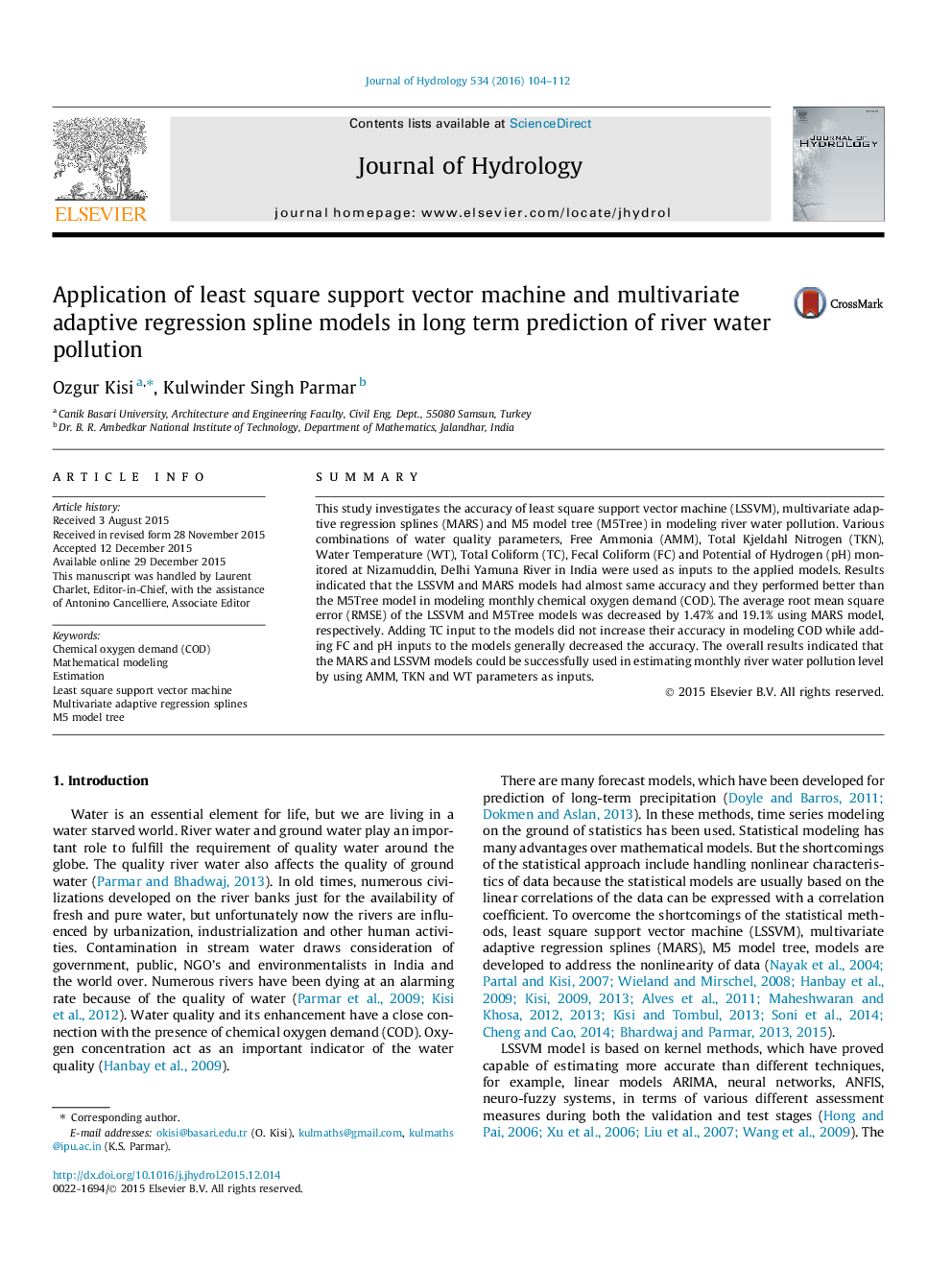| Article ID | Journal | Published Year | Pages | File Type |
|---|---|---|---|---|
| 6410306 | Journal of Hydrology | 2016 | 9 Pages |
â¢LSSVM, MARS and M5Tree are used to model chemical oxygen demand.â¢LSSVM and MARS models performed better than the M5Tree model.â¢LSSVM and M5Tree models' accuracy was decreased by 1.47% and 19.1% using MARS model.â¢Adding TC input to the models does not increase their accuracy in modeling COD.â¢Adding FC and pH inputs to the models generally decreased the accuracy.
SummaryThis study investigates the accuracy of least square support vector machine (LSSVM), multivariate adaptive regression splines (MARS) and M5 model tree (M5Tree) in modeling river water pollution. Various combinations of water quality parameters, Free Ammonia (AMM), Total Kjeldahl Nitrogen (TKN), Water Temperature (WT), Total Coliform (TC), Fecal Coliform (FC) and Potential of Hydrogen (pH) monitored at Nizamuddin, Delhi Yamuna River in India were used as inputs to the applied models. Results indicated that the LSSVM and MARS models had almost same accuracy and they performed better than the M5Tree model in modeling monthly chemical oxygen demand (COD). The average root mean square error (RMSE) of the LSSVM and M5Tree models was decreased by 1.47% and 19.1% using MARS model, respectively. Adding TC input to the models did not increase their accuracy in modeling COD while adding FC and pH inputs to the models generally decreased the accuracy. The overall results indicated that the MARS and LSSVM models could be successfully used in estimating monthly river water pollution level by using AMM, TKN and WT parameters as inputs.
